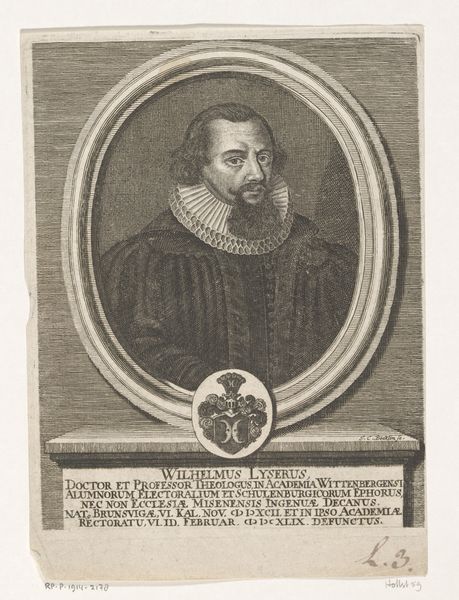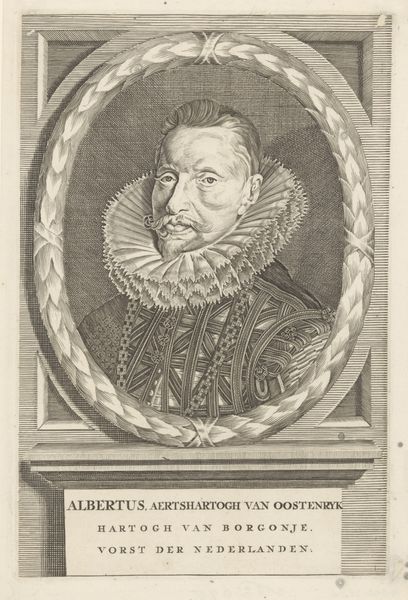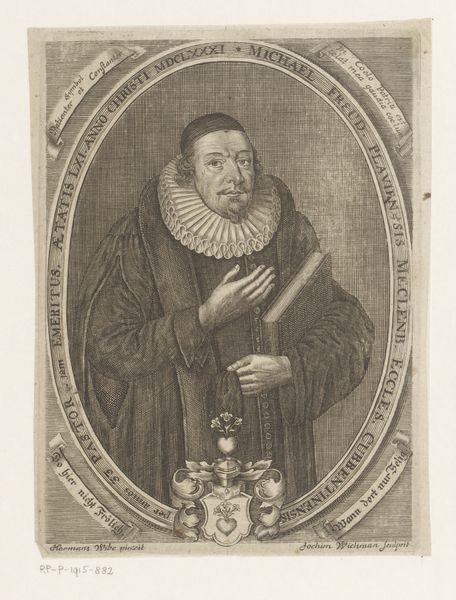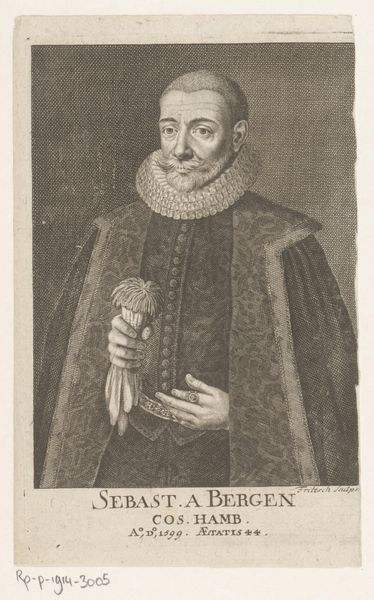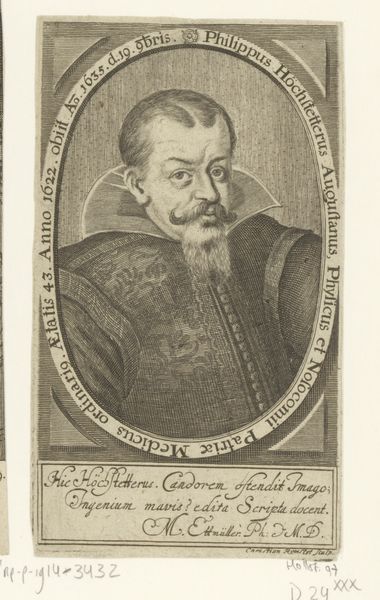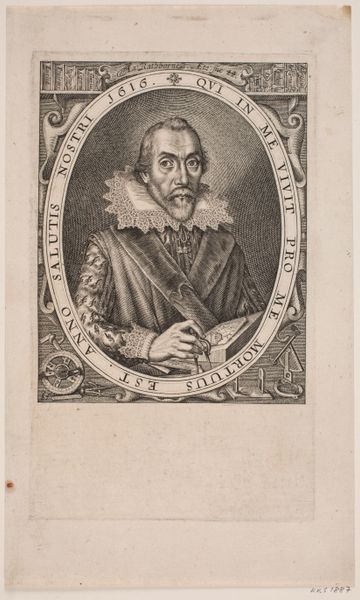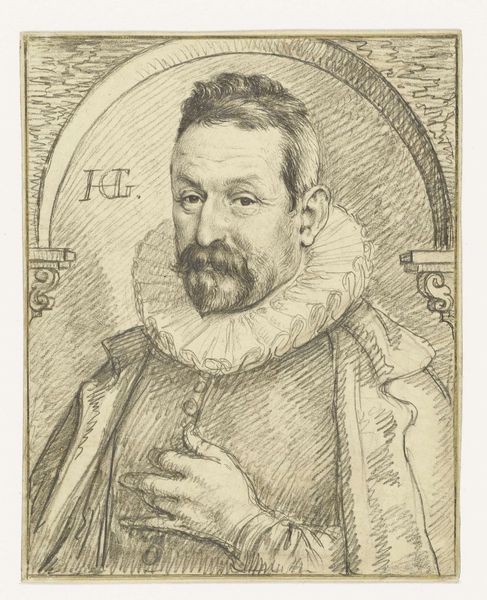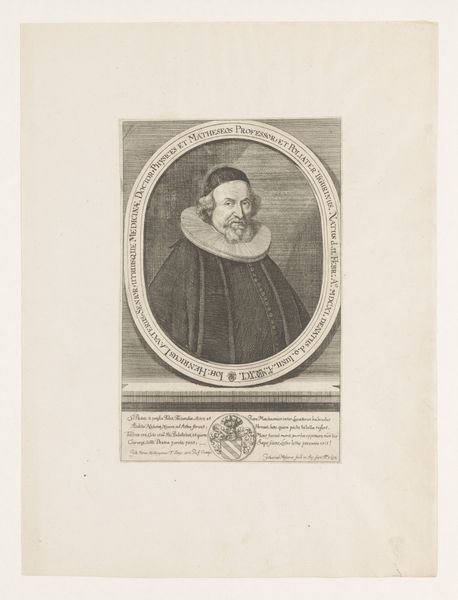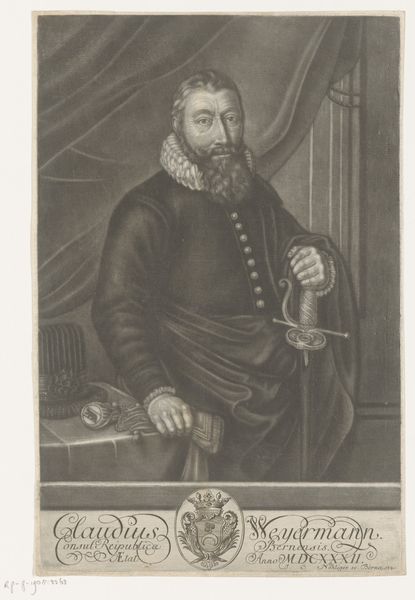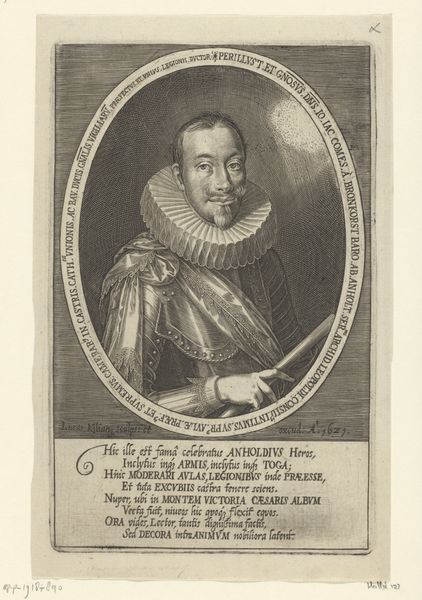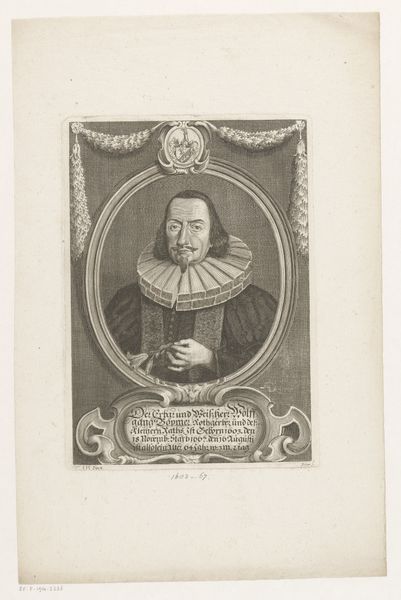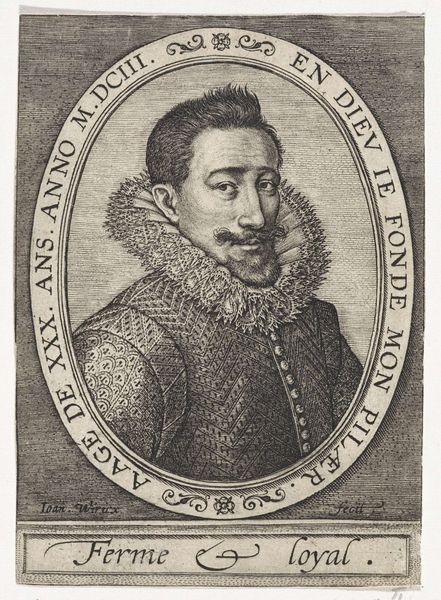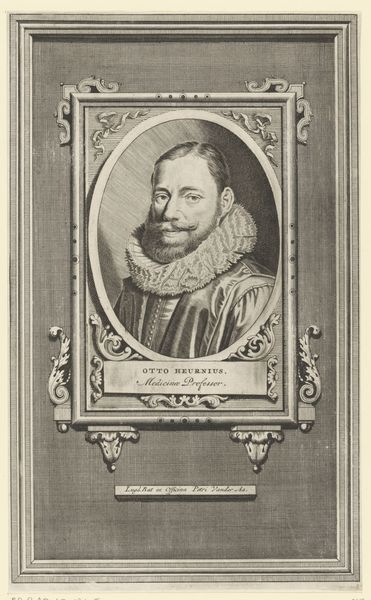
print, engraving
#
portrait
#
baroque
# print
#
old engraving style
#
portrait reference
#
line
#
history-painting
#
engraving
Dimensions: height 286 mm, width 178 mm
Copyright: Rijks Museum: Open Domain
Curator: This print, "Portret van Christoph Pelargus" from the 17th century, offers more than just a likeness; it’s a document of material culture. Editor: Yes, it's fascinating! The fine lines of the engraving create such detail. How do you interpret this portrait within the context of 17th-century printmaking? Curator: Look at the materials used - the paper, the ink, the metal plate. Consider the labour involved in creating the print. This wasn't simply about depicting a face; it was about reproducing an image for wider circulation, turning Pelargus into a commodity, a brand almost. What do you make of the textual elements, and where are they placed relative to the portrait? Editor: The text gives his titles –Pastor and Superintendent. Placing the text below emphasizes his status and credentials; but I find it interesting how the book in his hand almost mirrors the plaque beneath the text: I am curious why he's holding it and what that contributes. Curator: Precisely. The book’s materiality speaks volumes. It's not just a prop; it's a symbol of knowledge, power, and religious authority. Its mass production through printing allowed ideas to spread rapidly, fueling social and religious change. Consider the consumption of these prints, who owned them, how they were displayed and how such objects bolstered the status of people like Pelargus. The act of portraying Pelargus holding the printed book, reproduced via a print like this one for distribution speaks volumes of production and labor's power to enhance and amplify reputation in early modern Europe. Editor: So, it’s not just about the image, but about the means of its production and dissemination, highlighting the broader social and cultural landscape? I hadn't thought of it that way. Thanks, this has definitely broadened my perspective. Curator: Exactly! We've considered how the very act of creating and consuming the image reinforced existing power structures of the time and how labor helped establish early European society.
Comments
No comments
Be the first to comment and join the conversation on the ultimate creative platform.
